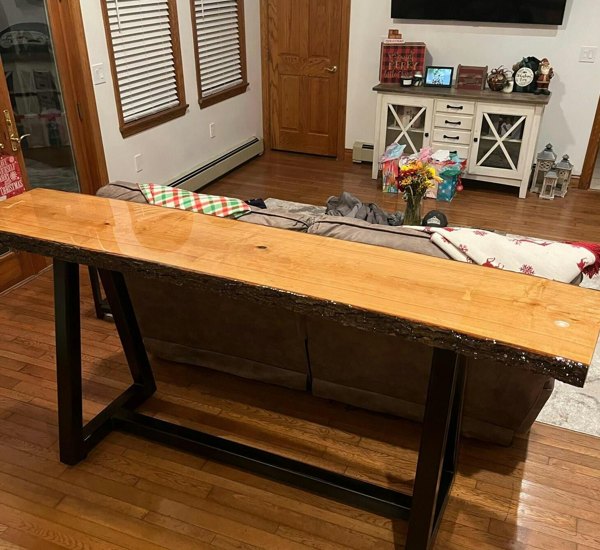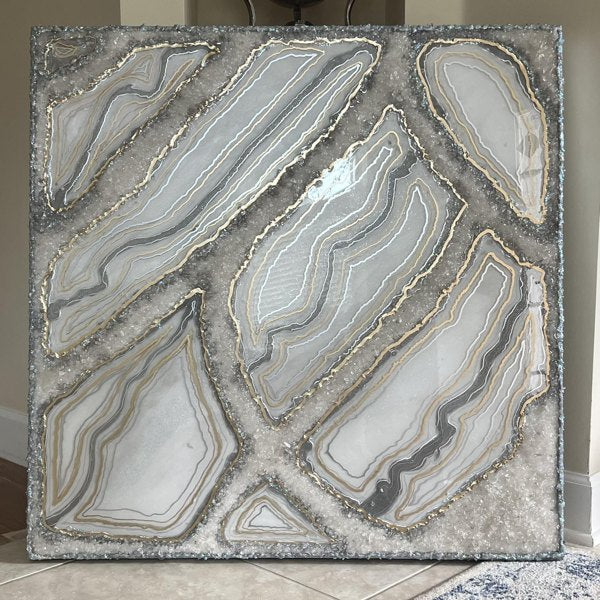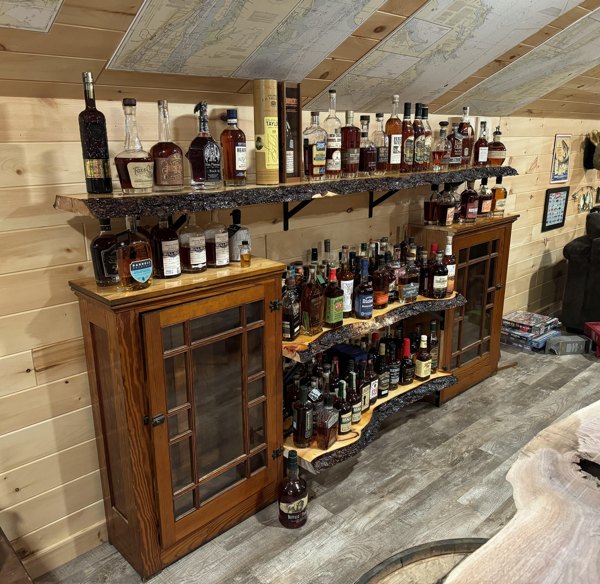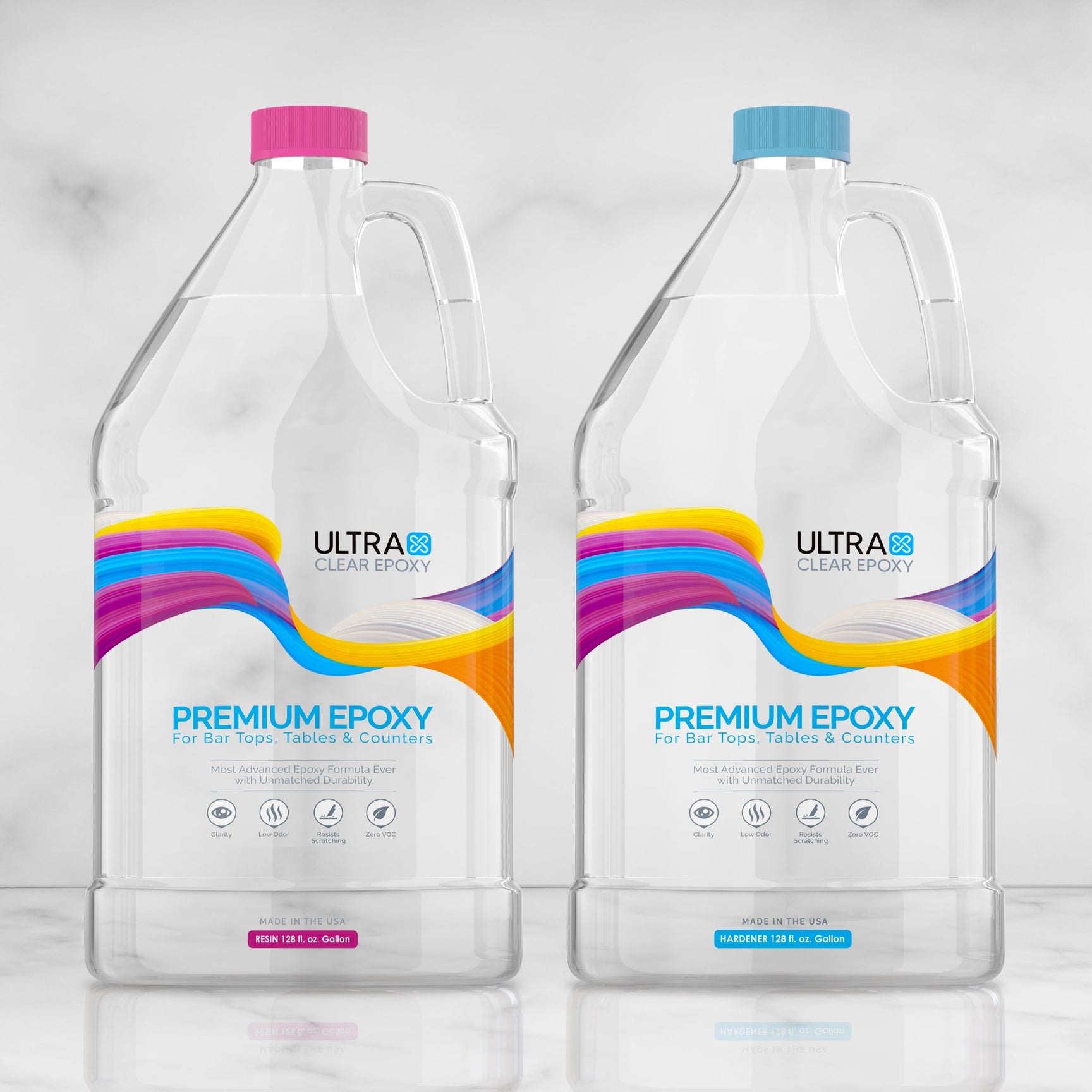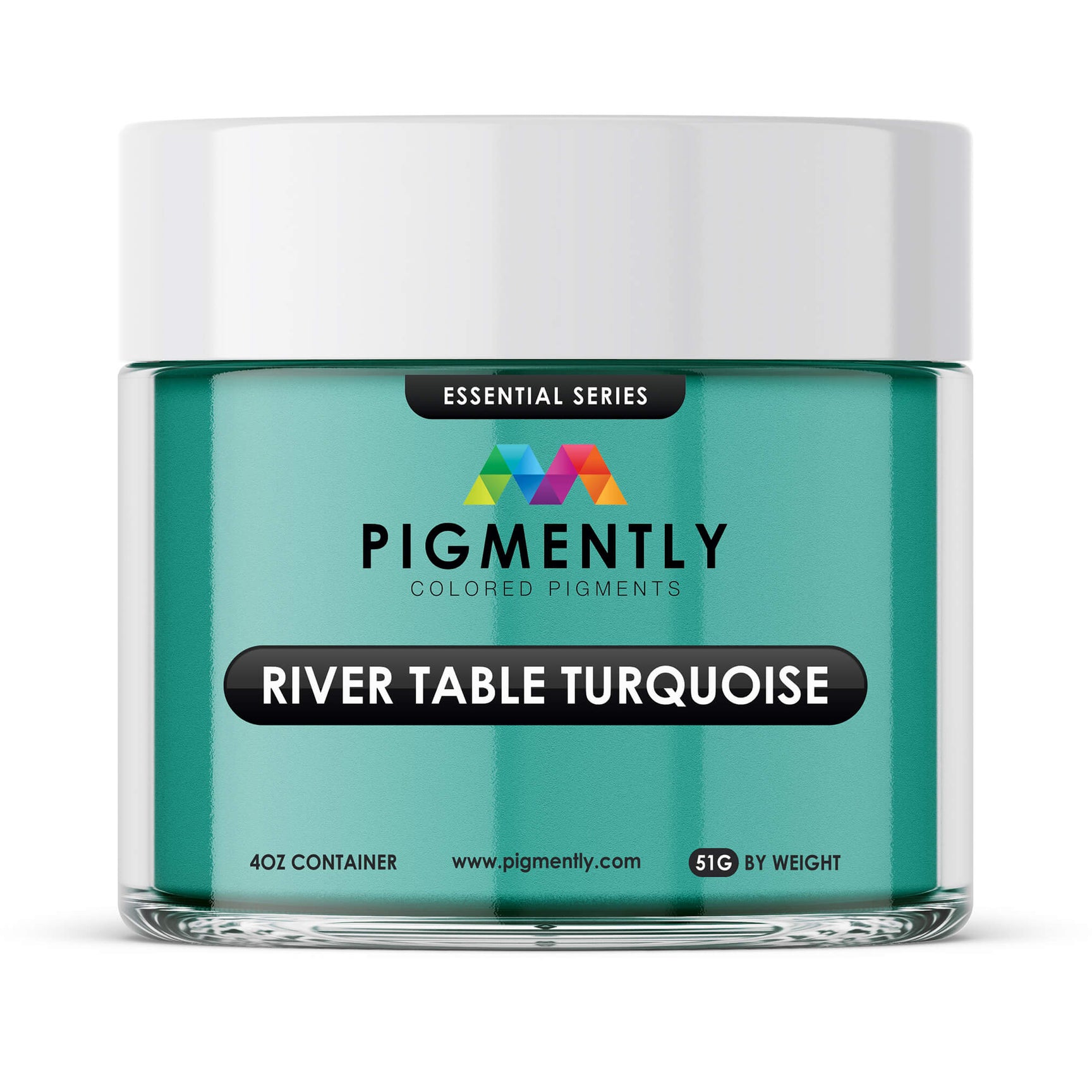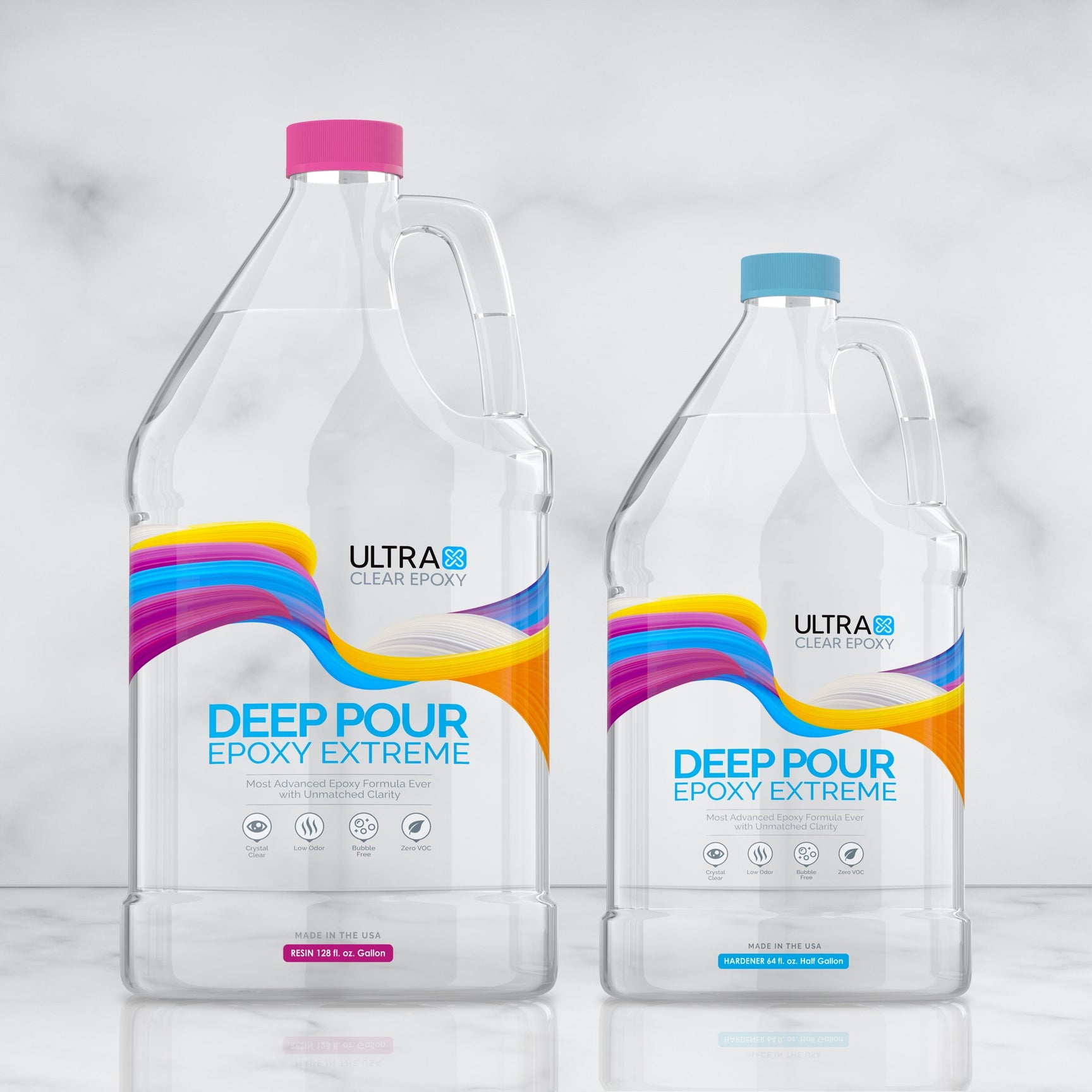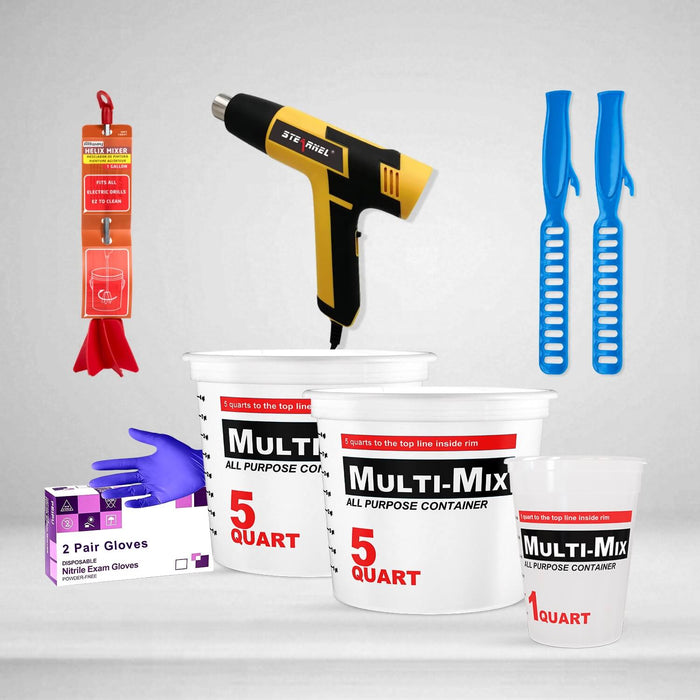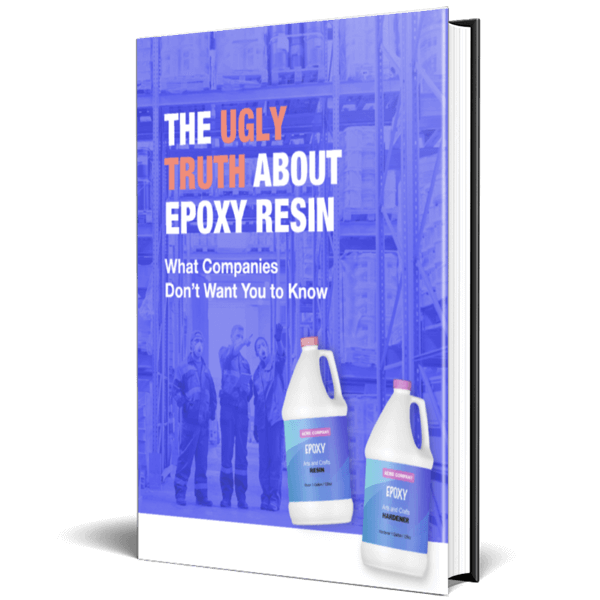Epoxy resin, when used as a sealant, provides a substrate surface with a rock-solid, clear waterproof coating. It's commonly applied to fixtures such as bar tops and countertops, along with furniture including table tops and benches, as well as other forms of seating.
When planning an epoxy project, one of the most important aspects is to make sure you know how much epoxy you'll need, and how many coatings you'll be applying to your substrate.
In this article, we'll explain how to determine the number of coats you should put on your project substrate.
How many coats of epoxy should I use?
An epoxy project will typically only require one flood coating of epoxy resin. With a high-quality epoxy resin, this is usually more than enough to preserve your substrate surfaces for several years, without even needing reapplication.
That being said, there are a few determining factors that can affect the number of coatings you'll need, and some project types require different types of coatings.
Here's what we'll be considering in this article:
-
Epoxy Project Types. The first thing that determines what you'll likely need is your project type. Some projects require more epoxy than others—or multiple kinds.
-
Epoxy Coating Methods. There are a few different types of coating methods that work in tandem with one another. We'll explain each of them in this section.
- Epoxy Resin Variants. There are also different variants of epoxy resin. While using multiple resin variants is rarely necessary, it's often a good idea to apply a topcoat of the strongest resin at the end of your project to provide the ultimate in long-lasting protection.
Let's start from the top of the list.
Factor #1: Epoxy Project Types
A project type is simply what you're using the epoxy for. Examples include epoxy bar tops, epoxy table tops, epoxy chairs/stools/benches, resin coasters, resin wall art, etc.
Your project type can be more specific, but those are the basics. For each type of project, a particular epoxy may be more suitable. For instance, a typical epoxy countertop will fare best with our UltraClear Bar & Table Top Epoxy. On the other hand, a river table will likely need a deep pour coating of our Deep Pour Epoxy to produce the iconic "river" vein.
Generally, a good table top epoxy is more than adequate, but they're not designed for deep layers. While it's possible to do multiple layers of table top epoxy successively, the chance for imperfections to manifest increases with each one. Add to that the extensive time requirements, and you can see why it's better to use a resin suited to the task.
If you're not sure what type of resin your project calls for, you can contact us for expert assistance.
Factor #2: Epoxy Coating Methods
Epoxy can be applied in different ways, and each technique serves a particular set of purposes.
For DIY purposes, the three primary coating methods are:
- Seal Coating
- Flood Coating
- Deep Pour Coating
Seal Coating
An epoxy seal coat is a manually applied application of epoxy resin in a thin layer. Most users accomplish this with a good paint brush that doesn't lose bristles.
The purpose of a seal coat is to fill in porous substrate surfaces (e.g., wood). Porous substrate surfaces have numerous tiny grooves and holes which hold in air.
When an epoxy flood coat is applied to a porous surface, it will attempt to seep into the holes and push the air out. Unfortunately, because a flood coat is a thick application of epoxy, and because epoxy is very viscous, what usually happens is air will get trapped partway through, suspended within the epoxy as air bubbles.
Air bubbles can be removed, and removal is actually part of the standard epoxy process, but the fewer you have to remove, the easier it is and the less likely you are to miss any.
To avoid the air bubble issue, an epoxy seal coat is almost always applied before any other coating. This thinner layer does the same job of seeping into the pores of a substrate material yet is thin enough to allow the air to escape, thus preventing air bubbles from forming.
An epoxy seal coat is typically applied and left to cure for at least 4 hours, though no more than 10.
Flood Coating
An epoxy flood coat is the primary coating in most epoxy projects. This coating involves mixing up a large batch of epoxy resin and pouring it onto the substrate surface.
Many table top epoxies are self-leveling. This means they spread out on their own until they reach equilibrium. This equilibrium is usually equal to the advertised thickness of a layer for that epoxy resin.
For instance, in the case of our premium UltraClear Bar & Table Top Epoxy, it's 1/8 of an inch. For many other brands it's a thinner 1/16 of an inch.
Deep Pour Coating
A deep pour coat of epoxy is a thick layer made using a deep pour epoxy. These distinct resins have a much lower viscosity than table top epoxies. They're less durable than table top epoxies, but can be poured in much thicker layers—up to 1, even 2 inches deep!
Deep pour epoxy is generally only used for projects that specifically call for it, such as for epoxy river veins, pure epoxy table tops, or certain types of resin art. If you don't need a very thick layer for your project, it's almost always best to stick with the conventional table top epoxy, which boasts the highest level of protection and resilence.
Our premium UltraClear Deep Pour Epoxy is unmatched in layer thickness and finish clarity.
Factor #3: Epoxy Resin Variants
Once you know what project you'll be doing and have an understanding of the different coating types, you'll need to figure out which resin variants are best for achieving your goals.
There are 3 common types of epoxy resin, plus a 4th one that gets used solely for marine projects (e.g., watercraft finishing).
These 3 epoxy resin types are:
- Table Top Epoxy. The strongest, thickest epoxy resin. This is the go-to for many epoxy projects, especially traditional table tops, countertops, and bar tops.
- Deep Pour Epoxy. We mentioned this in the previous section. This is for project requiring a thick layer of epoxy. River tables and resin art are the most common
- Art & Craft Epoxy. Similar to table top epoxy, but slightly less viscous, this epoxy resin variant is specially suited for filling resin molds and sealing artwork.
For projects in which deep pour epoxy is called for, we recommend applying a topcoat of our UltraClear Table Top Epoxy. This will give your surface the highest level of protection, ensuring it lasts for a minimum of 7 years with proper care.
Stay informed. Learn how to avoid subpar resin products.
Be wary of "budget brand" epoxy. Manufacturers of these resins cut corners to save on production costs, leading to subpar resins that don't blend or cure properly and often fail far earlier than expected.
Because imported epoxy is subject to fewer regulatory standards, it's easy to produce low-grade epoxy resin outside of the U.S., then have it transported into the country.
Additional Resources
Here are some additional resources you may find useful:
- How much will 1 gallon of table top epoxy cover? - Discover how much coverage you can expect from a gallon of table top epoxy.
- What is the difference between table top epoxy and "regular" epoxy? - Confused about the different epoxy terms? Learn the difference between these
- How to measure the amount of epoxy you need - Measuring epoxy properly is easy, once you know how to do it. Learn more here.
Have questions? Want advice? Contact us!
If you have any questions about how many coats of epoxy to use, or if you'd like assistance in planning an epoxy project, please reach out to us at UltraClear Epoxy—our epoxy experts are ready to assist!
You can contact us via phone or email here. During business hours, you can also text chat online with one of our resin specialists by clicking the Help button at the bottom of your screen.
In our online store, you'll find a variety of useful tools and supplies, ideal for resin projects, plus our award-winning UltraClear Bar & Table Top Epoxy and our UltraClear Deep Pour Epoxy.



